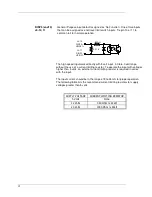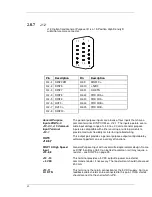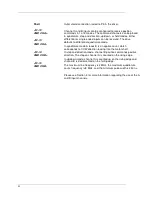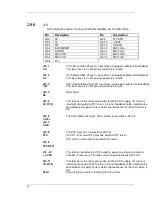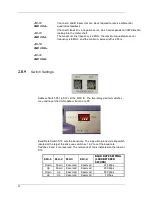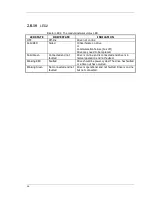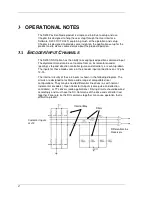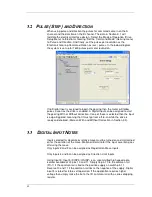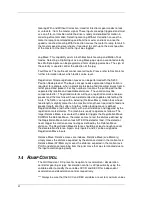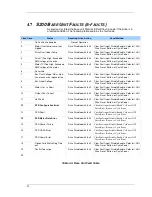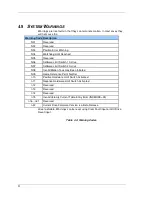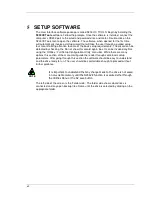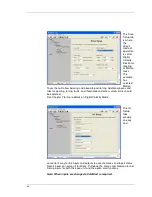
49
Gearing With and Without Correction: Used for Electronic gear modes to lock
or unlock to / from the master signal. These inputs are edge triggered and must
see an off-to-on transition while the drive is ready and enabled for motion in
order to get motor motion. Selecting Gearing Without Correction causes the
motor to ramp to commanded speed from the master and lock on once the
speed is reached. Gearing With Correction causes the motor to ramp to match
the master speed and overshoots, if required, to catch up to the exact position
of the master at the time that the input was toggled.
Jog Move: This capability exists in both Electronic Gearing and Motion Task
modes. Selecting a Digital Input as a Jog Move pops up an associated velocity
box. Multiple inputs can be programmed for multiple jog velocities. The sign of
the velocity is used to control the direction of the jog.
Fault Reset: The fault reset cannot reset all faults. Please refer to Section 4 for
further information about which faults can be reset.
Registration: Simple registration moves can be performed with the S200
Position Node product. The basic concept needs explanation. Registration is
required, for example, when a plastic web is being fed into cutter knives from a
roll of pre-printed product. For any number of reasons the printing will not be
separated by reliable and repeatable distances. The variation must be
compensated for. The printed material will have a registration mark once-per-
product and the machine will have a detector device capable of detecting this
mark. The S200 is set up with a indexing (Relative Move) motion task whose
feed length is slightly more than the maximum length ever required to feed one
product length into the cutters. Another motion tasking move is defined
Registration Move (with ether latch) with a short distance and triggered by the
registration mark detector. The machine is ready to operate as follows: The
larger Relative Move is executed, the detector triggers the Registration Move
DURING the Relative Move, the motor comes to rest the distance defined by
the Registration Move motion task AFTER the detector fired. If the detector
never trigger the motion comes to stop as defined by the Relative Move
distance. The Registration Move distance should be at least enough to cover
the deceleration distance. Again, only inputs 2 and 3 can be assigned as
Registration Move Inputs.
Relative Move: Relative moves are indexes. Relative Move (w/o Memory)
simply moves the distance expected by the distance stated in the motion task.
Relative Move (W/ Memory) moves the distance expected in the motion task
PLUS and distance remaining from the prior move that was terminated due to
the input assertion going away.
3.4
R
AMP
C
ONTROL
The GUI Revision 1.XX presents no option for acceleration / deceleration
control for gearing or jogs. Acceleration control is still possible by using the
variable editor to modify the variables ACCR and DECR for independent
acceleration and deceleration control, respectively.
*** Always be sure that the ACC and DEC variables are set to maximum values
Summary of Contents for S20630
Page 6: ......
Page 15: ...9 3 1 6 E 6 E 6 E 6 E 6 E 6 E 6 E 6 E...
Page 19: ...13 1 6 11 General 3H 3 3H 5 E 3 3 5J...
Page 94: ......

